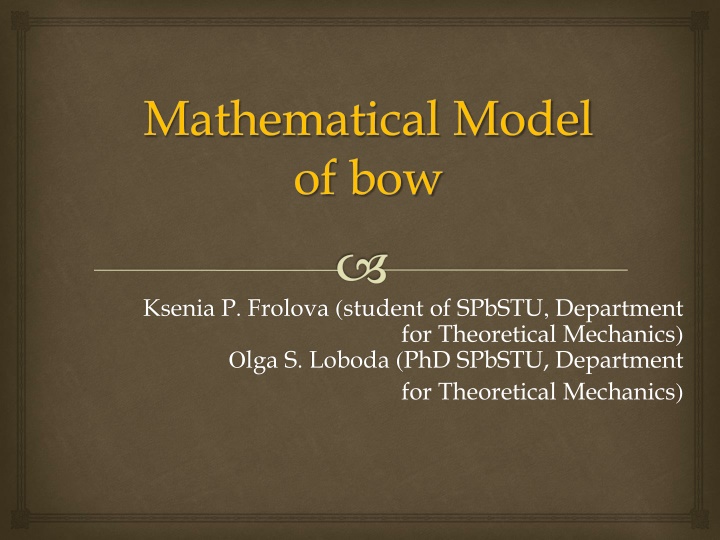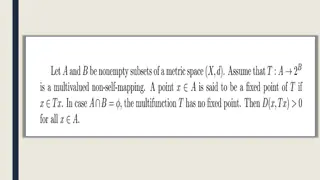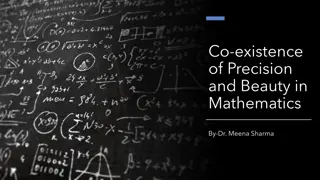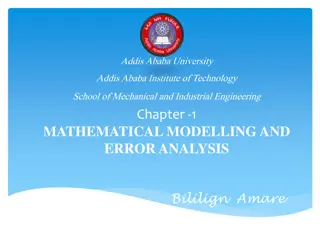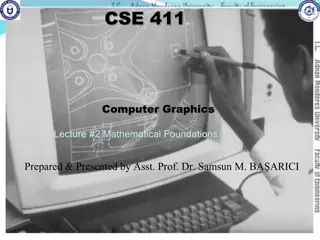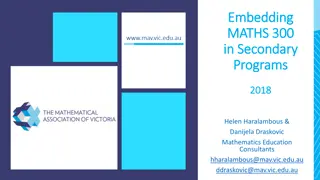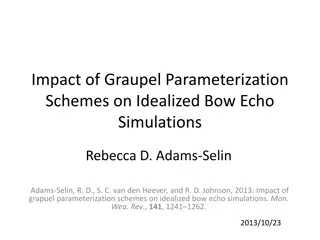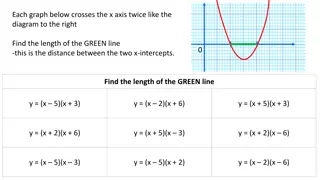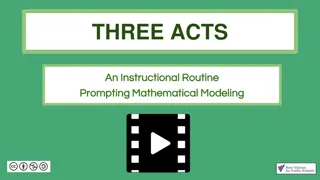Mathematical Model of Bow by Ksenia P. Frolova and Olga S. Loboda
Ksenia P. Frolova and Olga S. Loboda from SPbSTU present a detailed mathematical model of a bow, exploring topics like the principle of action, limbs bending, classification of bow types, and compound bows. The analysis includes problem definitions, modeling with rigid and flexible beams, function energy, initial velocity of arrows, and linear theories. This comprehensive study sheds light on the dynamics and mechanics of bows, offering valuable insights for further research and development in the field of theoretical mechanics.
Uploaded on Sep 17, 2024 | 2 Views
Download Presentation

Please find below an Image/Link to download the presentation.
The content on the website is provided AS IS for your information and personal use only. It may not be sold, licensed, or shared on other websites without obtaining consent from the author.If you encounter any issues during the download, it is possible that the publisher has removed the file from their server.
You are allowed to download the files provided on this website for personal or commercial use, subject to the condition that they are used lawfully. All files are the property of their respective owners.
The content on the website is provided AS IS for your information and personal use only. It may not be sold, licensed, or shared on other websites without obtaining consent from the author.
E N D
Presentation Transcript
Mathematical Model of bow Ksenia P. Frolova (student of SPbSTU, Department for Theoretical Mechanics) lga S. Loboda (PhD SPbSTU, Department for Theoretical Mechanics)
Plan of the presentation Brief review Problem definition Results Experiment Conclusion 2
Principle of action 3 Limbs bending
Classification of the bow Types of the bow 4
Compound bow 5 Limbs bending
Problem definition Modeling: 1. Straight rigid beams jointed with a spiral spring 2. Thin flexible beams; deformations are small Function Energy Initial velocity of arrow Compound bows: Comparison with classical bows dynamic curve F(?) 6
Model1 Limbs are absolutely rigid rods Spiral spring placed between the rods Bow string is inextensible 1 spring, 2 limbs, 3 bow string 7
Problem definition 1 M= ?? M spring moment spring stiffness ?/2 angle of limb deviation T bow string tension force F bow tension force ? angle between the spring andthe line of it s removal T = M F = 2Tcos? F = 2?? cos? 8
Function F(x) ?+? (0) ?(?)=F(0)+? (0) ?2+? (0) ?3+ 1! 2! 3! ?(?)=2?(?2 2?02) ?2?02(?2 ?02)?3 cubic dependence 9
Energy, Initial velocity of arrow ? (?2 2?02) 2?02?2(?2 ?02)?4 Energy U = Initial velocity of arrow 2 ?(?2 2?02) ??0?(?2 ?02) ?2 ?0= 10
Model2 Linear theory Static task Limbs - Bernoulli-Euler beams 11
Problem definition 2 N force in cross-section of the limb M moment in cross- section of the limb ? vector of limb tangent deformation shift vector u removal vector ? turn vector deformation vector 1, 2, 3 stiffness tensor components ? = 0 M M + ? ?= 0 = u + = u + ? ? = 0 =( =(? ? 2?? + ? 3? ? ) ) M M 1?? + M M = Mk k = = ? 12
Solution boundary conditions: u|s=0 = 0 N|s=l= N0 ? ?|s=0 = 0 M|s=l= 0 u movement vector ? ?-turn vector N force in cross-section of the limb M moment in cross- section of the limb s coordinate along the limb l length of the limb u|s=l = ?3 3?1N0 u movement vector N0 force in cross-section of the limb 13
Decision ?3 6 1F ?0 ?3 6 1F????)2+ ?????+ ? F = ?2 (????? ?2 (? ? + ?0????)2) ??3 3 1????( ? + ?0???? + ?0= 2 ? 14
Modeling of compound bow BC AB = F T F cable tension force , T string tension force 15
Experiment 1 b o w Measurement of spring removal Fixing of the handle loads 16
Experiment2 compound bow block 17
List of parameters 1 Designation Parameter Value Length of the limb l 0.650 m Considering length of the string Initial removal p 0.625 m x0 0.180 m Young modulus E 21GPa Cross-section height h 0.009 m Cross-section width b = b(z), z=[0..l], ( ) b = 0.0316z+0.01, m Fmax Maximum effort 11.5kgf 18
List of parameters 2 Parameter Length of the limb Designation 0.410 m Parameter Radius of the big block Radius of the small block Initial removal Designation 0.027 Length of the string 1. 032 m 0.020 Length of the cable 1.040 m 0.190 Maximum effort 20 kgf Height width of cross-section 0.008 0.05 - 0.08 19
Bow stiffness in model1 The Method of Least Squares ? 2 F ?? 2? ?2 2?02 ?2?02?2 ?02??3 S = ?=1 ?? ??=0 ? = 23.169 N m 20
Bow stiffness in model 2 I =b 3 = ?? ? = 0.0316? + 0.01 12 ? = 24.852 2 E Young modulus, I moment of inertia of cross-section of the limb 21
Bow energy 23
Dependence of effort from removal 25
Conclusion Mathematical description of bow with straight rigid limbs jointed with a spiral spring Mathematical description of bow with thin flexible limbs Bows with flexible beams more powerful then bows with straight rigid beams Model of bow with flexible beams describe the real construction more correctly. It is also more effective. System of blocks can be used in more powerful bows 1. 2. 26
REFERENCES 1. . . . 28 // 2005 - 2 - . 60 68. I.F. Zaniewski. Modeling of the archery bow and arrow vibrations // Shock and Vibration 2009 - 3 - p. 307 317. . . [ ] // : [ ] 2011 URL: http://www.archery- sila.ru/ . , . , . . . // 1991 - 8 - . 38 75. . . . [ ] // : [ ] 2009 URL: http://www.archery-sila.ru/ . . . // " " ": 2011 - 36 - c. 78 86. C.N. Hickman. Dynamics of a bow and arrow // Journal of Applied Physics 1937 - V. 8 - p. 404-409. B.W. Kooi, J.A. Sparenberg. On the static deformation of a bow // Journal of Engineering Mathematics 1980 - V. 14, 1 - p. 27-45. . . . : . . .- . , 2008 - 103 . T.M. Hamilton. Native American Bow. Columbia: Published by Missouri Archeological Society, 1982 148 p. B.W. Kooi. Archery and mathematical modeling // Journal of The Society of Archer-Antiquaries 1991 - V.34,.p. 21 29. J.L. Park. The behaviour of an arrow shot from a compound archery bow // Proc. Of the IMechE, Part P: Journal of Sports Engineering and Technology. 2011. V. 225, 8. p. 8 - 21. . . . . . .: - , 2007 - 101 . J.E. Gordon. Structures, or why Things don't Fall Down. Harmondsworth: Published by the Penguin Books, 1978 395 p. 2. 3. 4. 5. 6. 7. 8. 9. 10. 11. 12. 13. 14. 27
